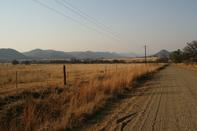A Blessing in Disguise
South Africa is a very lucky place. We have been blessed with a stable home on the world’s oldest continent, far from any earthquakes or volcanoes.

Our rocks have crumbled into fertile soil that supports a huge diversity of plants. And, as has been mentioned above, we have a hefty percentage of the planet’s valuable minerals buried under our feet. The Vredefort impact was therefore a rare black mark on our record.
Or was it? Recent research has shown that the Vredefort impact was a blessing in disguise. Yes, it caused enormous damage. And yes, it resulted months of darkness and cold as the dust blocked out the sun. But it also very probably saved our gold fields from destruction.
The Precious Gold
When the bolide struck, it fractured the ground and angled the rock strata diagonally down into the earth, radiating towards the centre of the crater. A blanket of ejected boulders and dust then covered the entire area, smothering the rocks beneath.
The gold-rich layers of the Witwatersrand Supergroup were thus protected and pushed safely underground. If it had not been for the Vredefort impact, the precious gold would have remained near the surface and been eroded away, until it dissipated. Instead, the gold remained concentrated in payable reefs which have been mined with spectacular success.
Since gold was discovered in 1886, we have exhumed 50 000 tonnes of the stuff, more than 30% of the total amount ever mined, and South Africa still holds around 50% of the world’s known gold reserves. We are currently the world’s largest gold producer with an annual output of over 400 tonnes, which amounts to 17% of the global supply.
A Golden Lining
The connection between the gold fields and the Vredefort impact explains a couple of things. Firstly, it helps us understand why the gold mines of the Witwatersrand extend in a neat arc from Johannesburg through the West Rand and Klerksdorp, to Welkom.
This arc is set a pretty constant distance away from the Dome’s centre, and can be said to be an outer circle of the original crater. Secondly, the impact caused the gold-bearing strata to dip below the ground, in a southerly direction. This was not a problem to begin with, as the first gold mines were located at points where the gold reef breached the surface. However, as the miners followed the reefs through the rock strata, they found that they sloped deeper and deeper underground. As a result, South Africa has the deepest mines in the world.
Mponeng Mine near Potchefstroom, formerly known as Western Deep Levels, currently holds the record in this regard, with a working shaft that is approaching a depth of 4 kilometers. One can only imagine what the twentieth century would have been like without the gold of the Witwatersrand, or the Vredefort impact that saved it from dissipation. It just goes to show you that every asteroid has a golden lining.
By David Fleminger